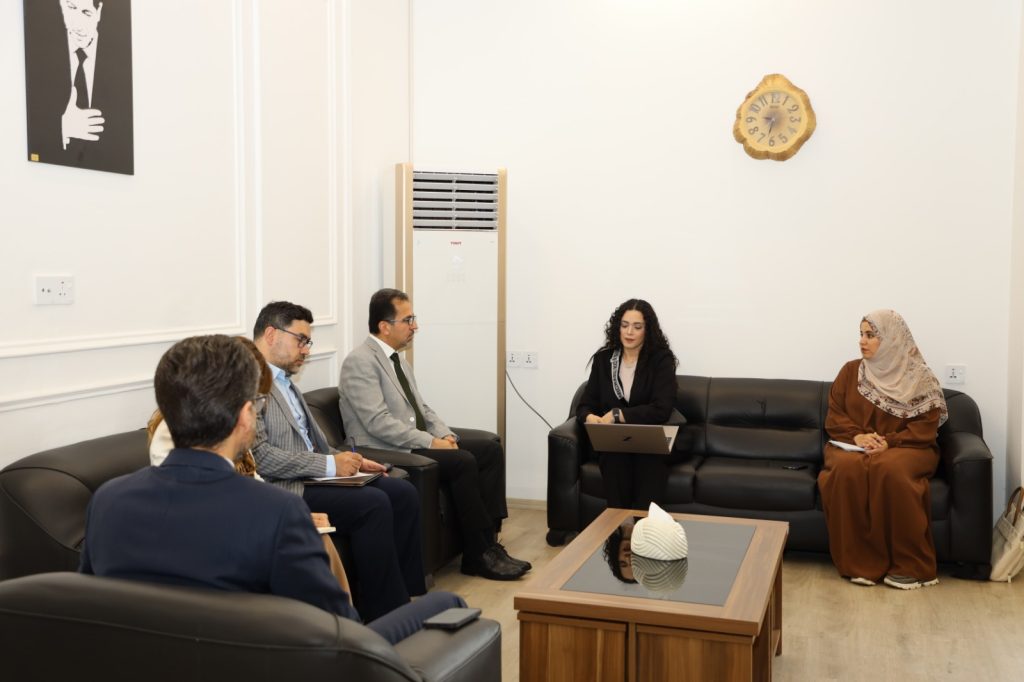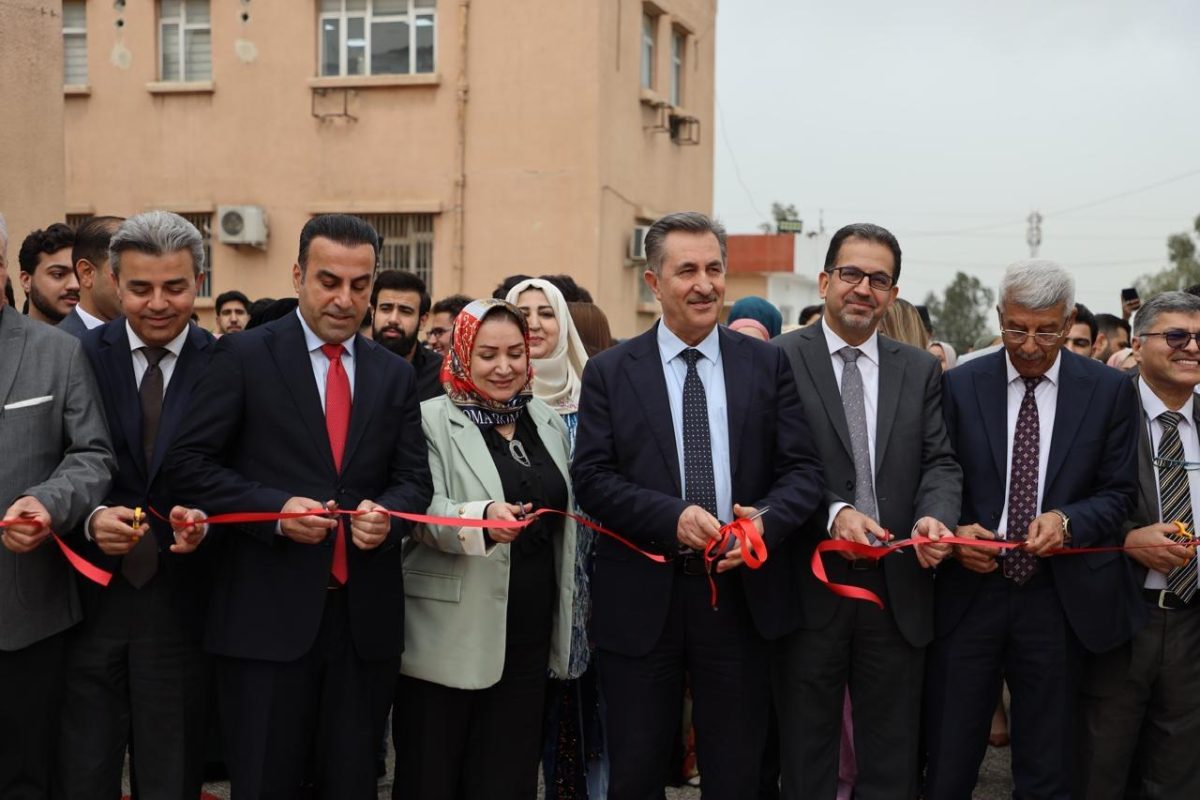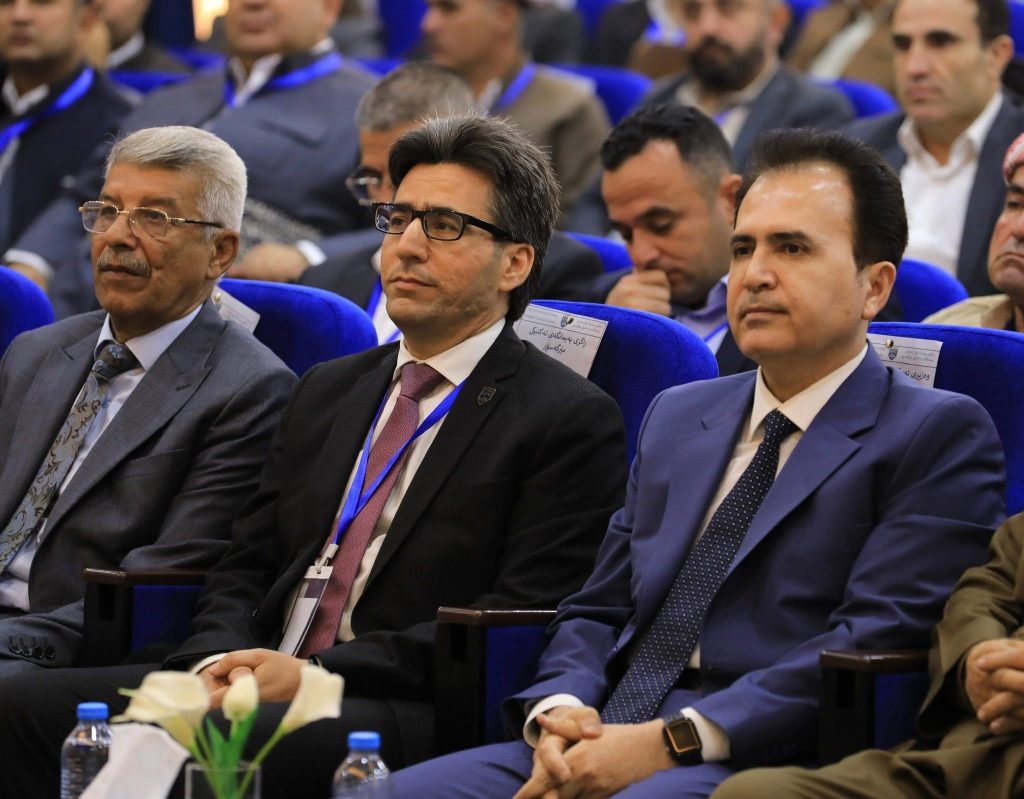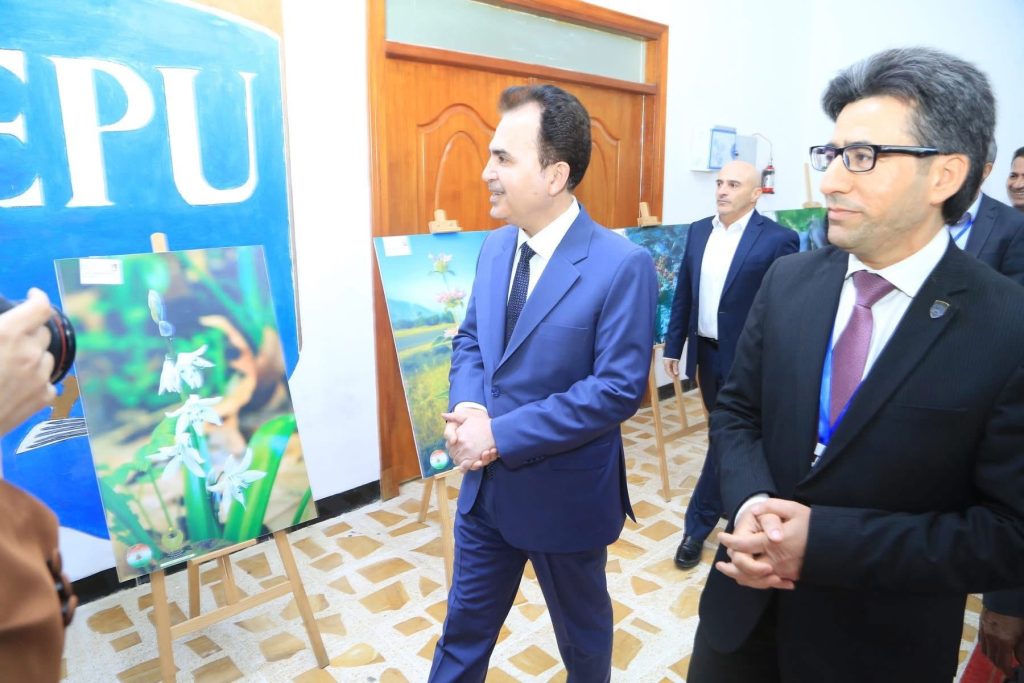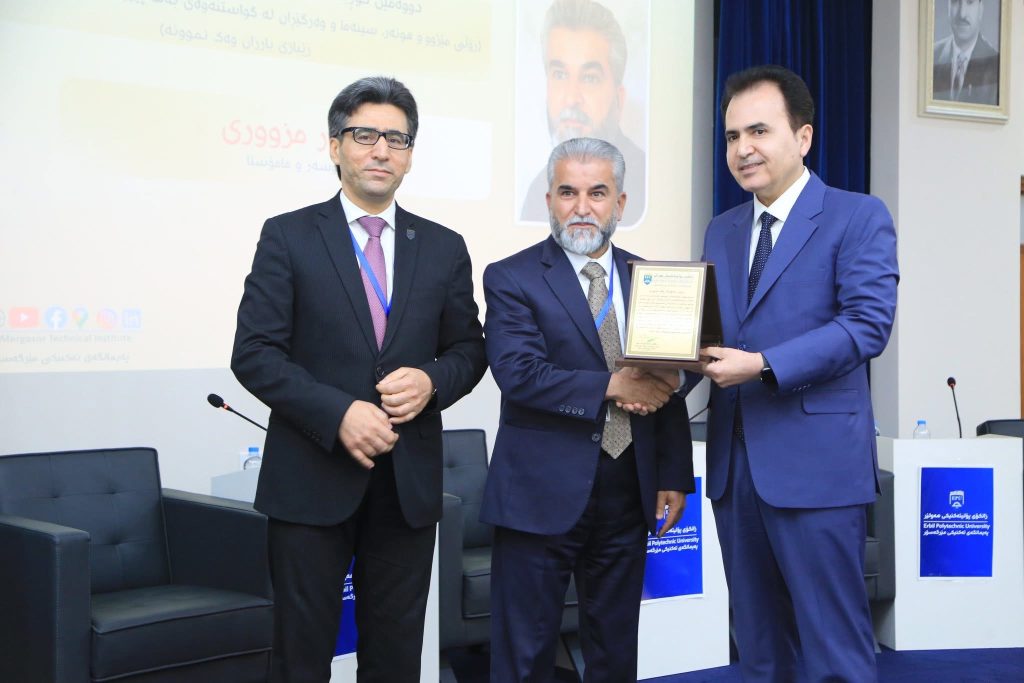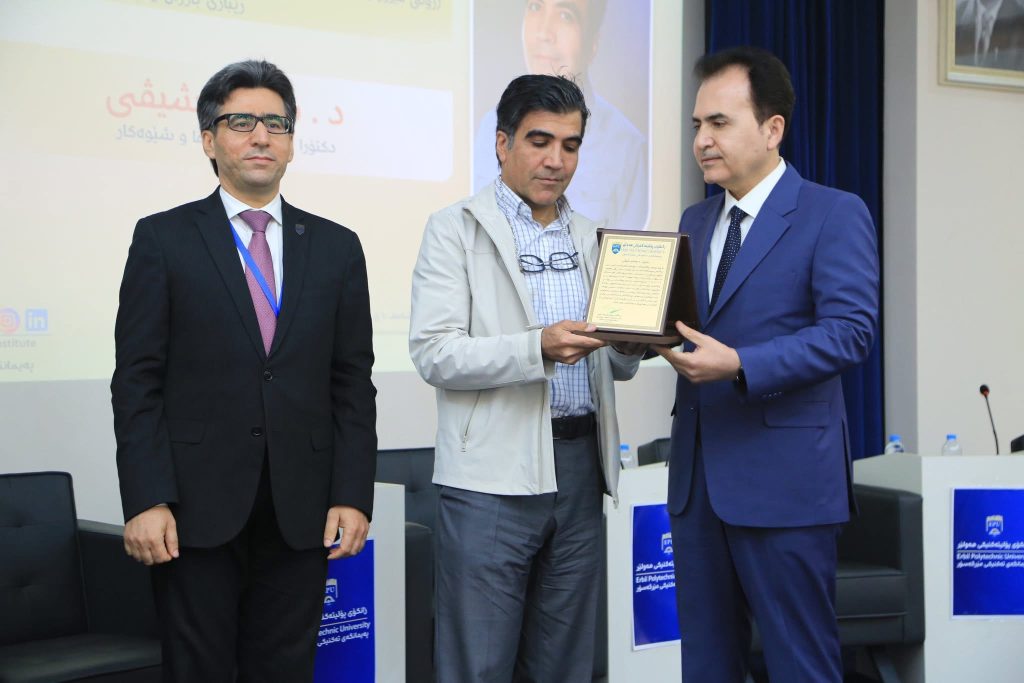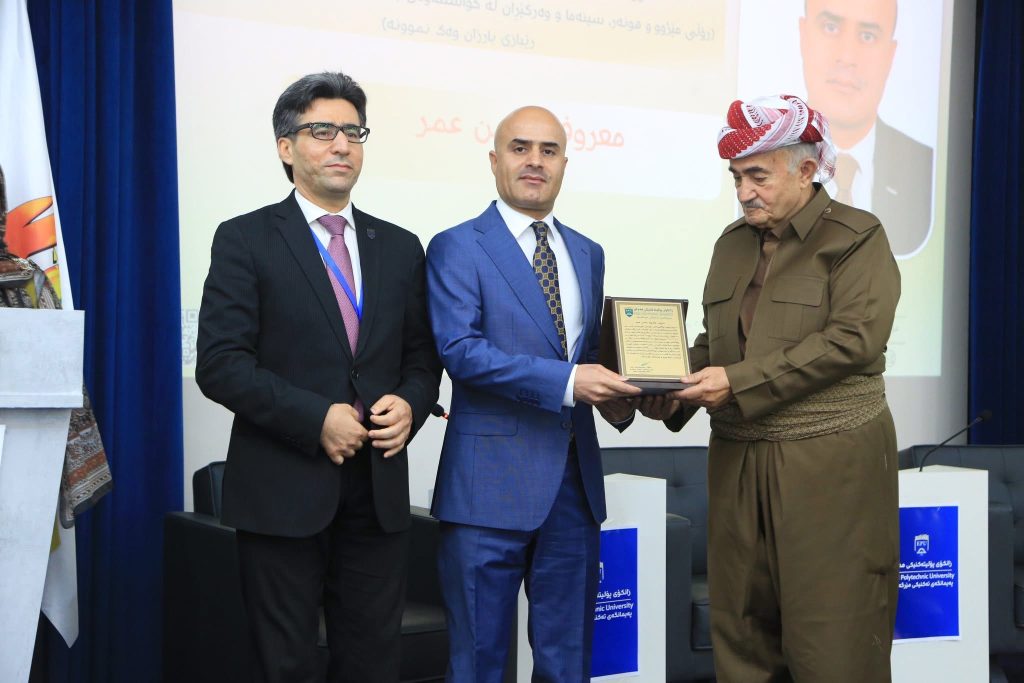On Wednesday, April 23, 2024, Dr. Botan Majid Ahmad, the Vice Rector of Erbil Polytechnic University for Scientific and Higher Education Affairs, welcomed a team from the French Expertise Agency (Expertise France), led by Dr. Rita Der Sarkissian, an expert in risk management from the agency.
In the meeting, several important people attended: Dr. Ranj Sirwan Abdullah, General Director of the Research and Development Center; Dr. Abdullah Omar Yaseen, Director of International Relations; Dr. Shara Kamal, Head of the Petroleum Technology Department at the College of Technology; an advisor from the Council of Ministers’ Office; and Shanaz Taha, Director of Response at the Joint Crisis Coordination Center from the KRG Ministry of Interior. They all discussed the steps to deal with natural disasters.The purpose of the meeting was to talk about the role of Erbil Polytechnic University in the disaster risk management project in the Kurdistan Region. This project is part of a joint program between the KRG Ministry of Interior, the French Ministry of Foreign Affairs, and the French Expertise Agency, supported by the European Union.
At the start of the meeting, Dr. Botan Majid Ahmad welcomed the guests and gave a short introduction about Erbil Polytechnic University, its structure, and its history.
Then, Shanaz Taha spoke about the importance of the disaster risk management project. She said it was a regional project that could help improve disaster management systems, response capacity, and public awareness. It would also support the KRG teams and help them make better decisions during emergencies and use logistic resources well.
Later, Dr. Botan Majid Ahmad said they talked about joining efforts to face natural disasters like droughts, floods, wildfires, and earthquakes. He said they wanted to use scientific research and real data to deal with these disasters in the best and fastest way through academic work.
